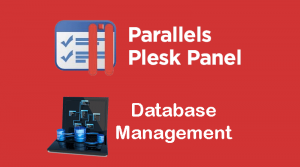How to add Hosting Service Plan in Plesk
As a reseller or administrator account Plesk control panel provide the ability to setup packages that limit the resources your customers can use by creating what Plesk calls a Service Plan. Typically the service plan includes disk space on the server, bandwidth, web hosting, and email service limits. and permissions that define the subscriber’s behavior and actions that can be done though their plesk customer control panel.
To Add Hosting service plan :
- Login to your Plesk control panel.
- Under Hosting & Services click Service Plans Link.
- From Service Plans Page click Add a Plan button.
- on the Creating Hosting Plan Page enter and choose the options as following :
- Service plan name : Type your service plan or reseller package name.
- Resources Section:this section Includes validity period, policy on overusing resources, system resources like disk space and traffic, and service resources such as websites, subdomains, mailboxes, databases, and others:
- Overuse policy: here you can specify your Over usage for your client account:
- Overuse is not allowed:Disallow overuse of resources. When the account reach the limit, the system automatically suspend the account.
- Overuse of disk space and traffic is allowed:by clicking this policy option you are allowing overuse of disk space and traffic. and you have an option to Notify me by email in cases of overuse.
- Overuse is allowed:this option policy will allow the hosting account to use and ignore plan limit.You can Notify check me by email in cases of overuse to receive notification when account use overdue resources.
- Disk space: specify the Disk space quota limit or check Unlimited.
- Traffic: type the monthly bandwidth traffic or check Unlimited.
- Domains:Define the maximum domains that can be created by the hosting account users or set Unlimited.
- Mobile Sites:Enter the maximum Mobile versions of websites, created and hosted with UNITY Mobile or check Unlimited.
- Subdomains:Define the maximum Subdomains for the subscriber, or check Unlimited.
- Domain aliases: Enter the maximum allowed Domain aliases for subscriber.
- Mailboxes :Specify the maximum email address accounts for the subscriber.
- Mailbox size: enter the maximum size quota for each email account.
- Total mailboxes quota :Specify the overall total of mailbox size for all email accounts for the plesk subscriber account.
- Mailing lists:Enter the maximum mailing list for the subscriber or check Unlimited.
- Additional FTP accounts: Enter how many FTP accounts the subscriber can create on plesk for the domains.
- MySQL databases: Define the maximum MySQL databases instances the hosting plesk account can add on his account.
- Total MySQL databases quota: Size Quota to indicate overall MySQL databases size.
- MS SQL databases:Maximum numbers of MS SQL databases allowed to the subscriber.
- Total MS SQL databases quota:Total Quota for overall database size.
- MS SQL database file size:Define the maximum MS SQL database physical data file size.
- MS SQL database log file size:Define the maximum MS SQL database physical log file size.
- Expiration date:Set the subscriber Expiration Date, after reach the expiration date the system will suspend the account.
- Web users:Define the limit of plesk subscriber to create web users.
- Java applications:enter the maximum number of java application to install.
- ODBC connections:Enter the maximum number allowed to create odbc connections to the databases.
- Overuse policy: here you can specify your Over usage for your client account:
- Permissions Section:Inside this section you have the ability to define what privileges and services are provided with the subscription.In other words , from this section you are setting what exactly the subscriber or customer can manage on his account and what are not.
- Management of access to the server over Remote Desktop:Be careful when you allow subscriber for this option , if it enabled the account can access the server using remote desktop
- DNS zone management: Allow the subscriber or customer from manage his domain DNS zone file.
- Hosting settings management: Makes the following hosting parameters act as a preset: SSL/TLS support and support for programming and scripting languages, custom error documents, and web server settings.
- Common PHP settings management:Allows customers to adjust or modify common PHP settings individually for each site.
- PHP version and handler management:Allows subscribers to change the PHP version and the PHP handler individually for each site.
- Setup of potentially insecure web scripting options that override provider’s policy:If the “Hosting settings management” permission is granted, it is recommended to deny this permission for better site isolation.
- Anonymous FTP management :Allows plesk customers to add anonymous FTP.
- Scheduler management: Allow subscribers to create and manage plesk scheduled tasks.
- Spam filter management:Allows the subscriber customize filtering settings of the SpamAssassin spam filter.
- Antivirus management:Allows the subscriber to change settings of the server-side protection of incoming and outgoing mail from viruses.
- Backup and restoration of subscription data using the server storage :This will allows the subscriber to back up and restore websites data, backup data will store on Plesk server storage .
- Backup and restoration of subscription data using an FTP storage :Allows the subscriber to back up and restore their websites, and use external FTP servers for storing their backups.
- Backup and restoration of account data using the server storage :Allows the subscriber to back up and restore their websites and account data, and use the storage on the Plesk server for keeping backups.
- Backup and restoration of account data using an FTP storage :Allows the subscriber to back up and restore their websites and account data, and use external FTP servers for storing their backups.
- Web statistics management :With this option the subscriber will be able to select Web statistics engine , and specify password-protected directory for repots.
- Log rotation management:Allows the subscriber to cleanup log files for their sites. Also, allows the subscriber to remove log files.
- Access to Application Catalog :Provides the subscriber with access to prepackaged applications that can be installed on websites. If you select this option, be sure to select the PHP support checkbox on the Hosting Parameters tab.
- Access to WordPress Toolkit:By enabling this option you will Allow the subscriber to manage their WordPress instances using the WordPress Toolkit that installed on Plesk server.
- WordPress Toolkit security management: Allows the subscriber to manage the WordPress Toolkit security options for their WordPress instances.
- Domains management:Allows the subscriber to add/remove domains, subscriber can manage web forwarding.
- Subdomains management:This will Allows the subscriber to add/remove and manage website subdomains.
- Domain aliases management :Allows plesk customer to manage any additional alternative domain names.
- Additional FTP accounts management:Allows the subscriber to manage FTP accounts.
- Java applications management:Allows the plesk subscriber to install Java applications on websites.
- Ability to change mail settings:This permission option will allows the subscriber to manage mail server settings for each domains.
- Mailing lists management : Allowing subscriber to manage Mailing list for domains.
- Hosting performance settings management : Allows Plesk subscriber to modify PHP performance settings for each website.
- Hard disk quota assignment:Allows the subscriber to set up the Hard disk quota.
- Database server selection:Allows subscribers to select a database server for their databases .
- Remote access for database users:Allows subscribers to set up custom remote access control settings. These settings apply to database user accounts. Depending on the database type.
- Access to advanced operations: Website Copying:Determine if the website copying and maintenance mode option are available to the subscriber in Plesk Customer control Panel.
- Password-protected directories management:Determine if the protected directories feature is available to the subscriber Plesk control Panel.
- Ability to manage additional user accounts :specify whether the subscriber can manage additional user accounts on plesk Customer Panel.
- IIS application pool management: IIS pool is allowing to set up the maximum amount of CPU power that the pool may use ,this option will this option via plesk control panel.
- Additional write/modify permissions management:Allows the subscriber to toggle the hosting parameter Additional write/modify permissions. These permissions are required, for example, if subscriber’s web applications use a file-based database (like Jet) located in the root of httpdocs or httpsdocs folder.
- Hosting Parameters Section:
- Enable hosting:Determine if the hosting service is actually provided with the plan.By turning off this option the service plan will be available as mail service only
- Status of websites in suspended subscriptions:Define how plesk will display suspended subscribers websites.
- Disabled:Websites visitors will be redirected to the web server’s default page. As default it will be plesk default page.
- Suspended:Suspended websites do not open in browsers. Visitors are redirected with the search engine friendly 503 HTTP code to the custom maintenance page.
- Active:The websites will continue working in normal mode.
- Hard disk quota:By setting value of Hard disk quota, the hard disk will not allow writing more files to the web space when the limit is reached:and error message “Out of disk space” will raised.
- SSL/TLS support:Allows subscribers to setup SSL/TLS encryption on websites .
- Permanent SEO-safe 301 redirect from HTTP to HTTPS:this option is related to the SSL/TLS support selection and when this option select websites will redirected from HTTP to HTTPS version of the site using the 301 HTTP status code.
- Web statistics :Selects a statistics engine that will create and display reports of websites visitors.
- Accessible via password protected directory ‘/plesk-stat/webstat/’ : protect plesk -stat/websat/ with password.
- Custom error documents:Allows subscribers to create and use custom error pages for each HTTP error codes web server return.
- Microsoft ASP.NET support: Available on Windows Web server and allow the subscriber to switch between asp.net .net framework versions.
- CGI support: Enable CGI for subscribers.
- Perl support:Enable Perl for subscribers.
- Python support:Enable Python for subscribers.
- Microsoft ASP support:Enable traditional asp for subscribers.
- SSI support: Enable SSI for subscribers.
- Allow web users to use scripts:Allows scripting at web pages available at URLs like http://subscirberdomain.com/~<username>/<webpage>, where <username> refers to a web user.
- Default Database Server: Specify the default database engine for supported type to be used within a plan.
- Additional write/modify permissions:This option is required if subscriber’s web applications use a file-based database (like Jet) located in the root of httpdocs or httpsdocs folder.
- Web Deploy publishing: Enable Web Deploy Publishing for subscribers.
- PHP Settings Section:
- PHP support:Specify the PHP version and handler type to use (run PHP as).
- Performance settings: Define the PHP settings.
- Additional directives: Add additional PHP settings on the text area.
- Mail Settings Section:
- Switch on the mail service:Turns on or off the mail service for any new subscriptions related to this plan.
- Webmail:Specify the webmail interface to use the webmail service.
- Switch on mailing lists:Enable the mailing lists service provided by Mailman software on the subscription’s websites.
- Policy on mail for non-existent users:Defines how mail server should process the email messages sent to email addresses that are supposed to be registered under the subscription’s domains but actually do not exist. options are available:
- Bounce with message returns the mail back to sender with a notice.
- Forward to address forwards the mail to another email address.
- Reject silently rejects the mail without accepting it. This setting can decrease mail server load caused by a large amount of spam, which is often directed at randomly generated user names. However, this might be useful to spammers because scanning your mail server for valid email addresses will speed up in such a case.
- Redirect to external mail server with IP address (on Windows hosting), forwards the mail to the specified mail server.
- Outgoing messages from a domain (per hour):Sets up limit number for outgoing email messages from a domain.
- Outgoing messages from a subscription (per hour):Sets up limit number for outgoing email messages from a subscription.
- DNS Section:
- Master:A master or primary name server stores locally the zone file it serves.
- Slave:A slave or secondary server retrieves a copy of the zone file from the primary name server.
- Performance Section:
- Maximum bandwidth usage:Defines the maximum speed (KB per second ,KB/s) that a domain can share between all its connections.
- Connections limited to:Defines the maximum number of simultaneous connections to web server for all websites within the subscription.
- Logs and Statistics Section:
- Retain web and traffic statistics for:Set the value in Months , determining how long the web site statistics will remain on the server.
- Log rotation:Enables automatic cleanup and recycling of web server log files.
- Applications Section:By clicking Provide only applications that I select will allow you to choose application lists will be available for subscribers
- Press Ok button to save the hosting plan.






